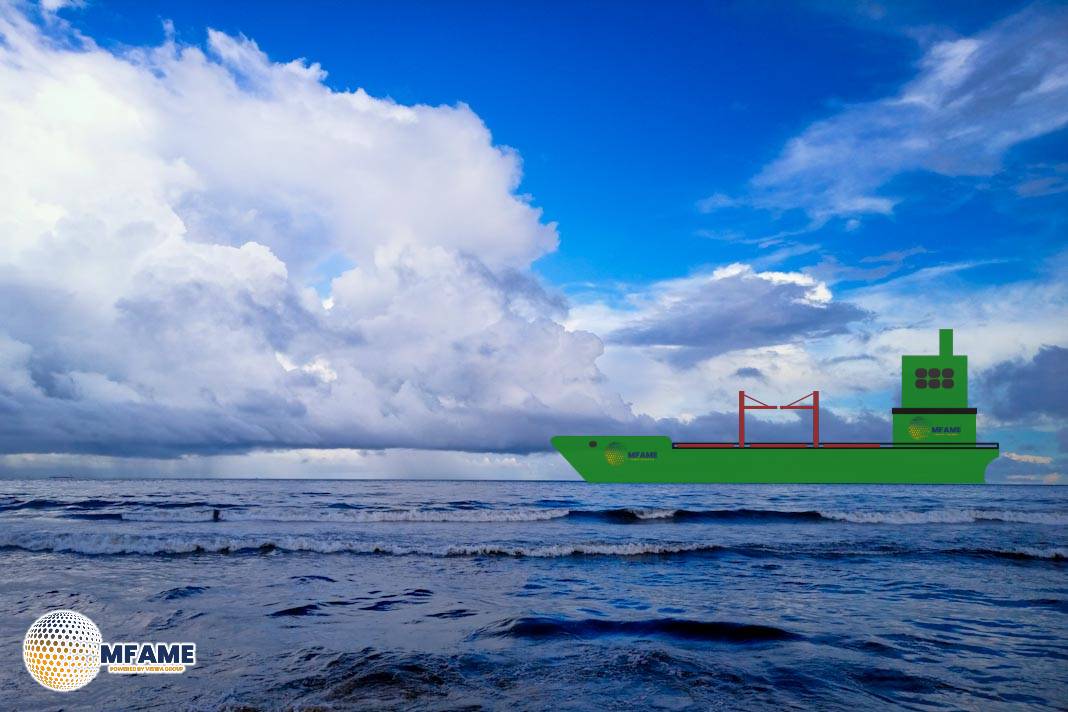- Automated cargo handling increases productivity and reduces processing time.
- Smart clothing and AI-driven vehicles are being tested to boost worker safety.
- KT’s IoT-enabled life jackets track individuals up to 200 km offshore.
Maritime routes are vital to regional and international trade. Nations with effective port facilities can easily handle exports and imports, making their economies resilient. Italy, which hosts international automobile brands such as Ferrari and Lamborghini, gains approximately $30 billion every year from car exports. Other nations that depend a lot on maritime trade include Japan, Germany, the UAE, the Netherlands, China, and Singapore, reports Marine Insight.
Safety and Security in Maritime Operations
Ship security is initiated by the human eye for vigilance. Crews must remain vigilant as early detection saves bigger issues in the future. Standard onboard procedures include proper lock-gating when leaving, limitation of visitor entrance, and patrol of sensitive places on a daily basis. Communications equipment must be fully operational as well during phases of loading and unloading as well as transits.
Tracking natural environmental conditions such as sea state, wind, and tides is essential for maintaining a safe journey. Man-made dangers like piracy, oil spills, and accidents, coupled with natural factors, constantly challenge the immunity of maritime operations. Such illicit activities as drug trafficking, illegal fishing, and human smuggling are regularly seen on international waters. Increased acts of piracy and sea hijacking in recent times simply reinforce the need for sophisticated maritime protection systems.
Technology: A Solution to Contemporary Threats
Technology is a key factor in tackling maritime threats. With increasing piracy and hacking threats, cargo ships need to ensure cybersecurity. Hackers now have access to entire cargo databases, compromising global supply chains.
Autonomous vessels, similar to Tesla’s autonomous cars, can reduce human error. Autonomous ships employ artificial intelligence, machine learning, and computer vision to navigate and ensure safety in real time. As Tesla cars can detect monitoring gaps and react to dangers, autonomous vessels are being equipped with similar capabilities to manage crises and maximize performance.
Rise of Smart Ports
Ports are central to a country’s economic activity—more than 80% of international trade is transported through waterways. However, most ports are congested and inefficient. The move towards smart ports seeks to address this through automation and interconnected digital systems.
Smart ports employ technologies such as AI, big data, IoT, and blockchain to make operations more efficient. Smart ports have sensors, cameras, and remotely controlled equipment, allowing for real-time tracking of cargo and remote operation. For instance, the Port of Rotterdam is developing a digital twin of the whole port to track ship movement, cargo capacity, and environmental status. Likewise, South Korea’s Port of Busan implements blockchain technology to fight smuggling and enhance cargo transparency.
Inside the Operation of a Smart Port
A smart port operates through a fully connected ecosystem:
- Sensors and cameras collect real-time data
- Remote-controlled cranes and quay trains automate cargo handling
- Communication systems enable seamless coordination between sea and shore
Smart ports enhance efficiency by 25% and slash cargo processing time considerably. Worker safety is also a focus point. Smart gear and AI-driven wearable technology for sailors are being developed to enhance on-ground safety. Research is also being conducted to implement 5G for real-time marine communication.
Yet, the conversion has a price. Creating an intelligent port with AI can cost as much as $2.7 billion. Cargo scanners themselves cost between $1 million and $15 million, with extra money needed for constant maintenance. Intelligent ports also need to safeguard themselves against cyberattacks. For instance, the Port of Antwerp, at one point, became the victim of a drug cartel that broke into its IT system. Therefore, it is imperative that one invests in robust cybersecurity infrastructure.
Key Maritime Systems Enhancing Operations
Several automated systems have been introduced to ensure maritime safety and efficiency:
- AIS (Automatic Identification System): Provides real-time location tracking and navigation support.
- AMVER (Automated Mutual Assistance Vessel Rescue System): A U.S.-based emergency aid system that assists ships in distress.
- AMS (Automated Manifest System): Tracks pre-entered cargo details to enhance port security.
- VMS (Vessel Management System): Uses GPS to manage traffic and exchange environmental data.
South Korea’s ICT-Based Maritime Safety Innovations
Korea Telecom (KT) has developed cutting-edge ICT solutions to enhance maritime safety. KT’s LTE network, with long-range coverage, allows for communication in distant ocean areas. Their IoT-based life jackets can transmit information up to 200 kilometres from the coast. The jackets trigger water pressure sensors on immersion, alerting rescue teams immediately about an individual’s location and status—vital details in the case of an emergency.
Forecasting the Unpredictable: Weather Tech at Sea
With increasing climate-induced disturbances, reliable weather forecasting solutions are more relevant than ever before. Techniques such as atmospheric radio occultation assist in the identification of variations in atmospheric pressure through radio signal perturbation.
GNSS (Global Navigation Satellite System), a type of radio occultation, provides accurate meteorological information particularly suitable for autonomous ships. Such analysis can assist ships in steering clear of hazardous weather patterns in real time.
Space-Based Solutions: The Role of Satellites
Startups like Spire Maritime are taking weather and ship tracking to the next level. Their CubeSat satellites gather ocean data such as:
- Sea surface temperature
- Ocean current direction
- Wind speed
- Ship positioning
This satellite-driven data helps ships plan efficient routes while identifying risks well in advance.
Did you subscribe to our daily Newsletter?
It’s Free Click here to Subscribe!
Source: Marine Insight


















